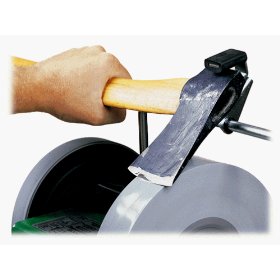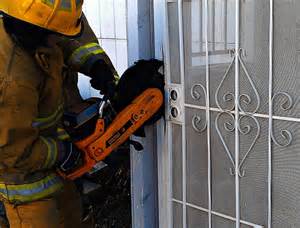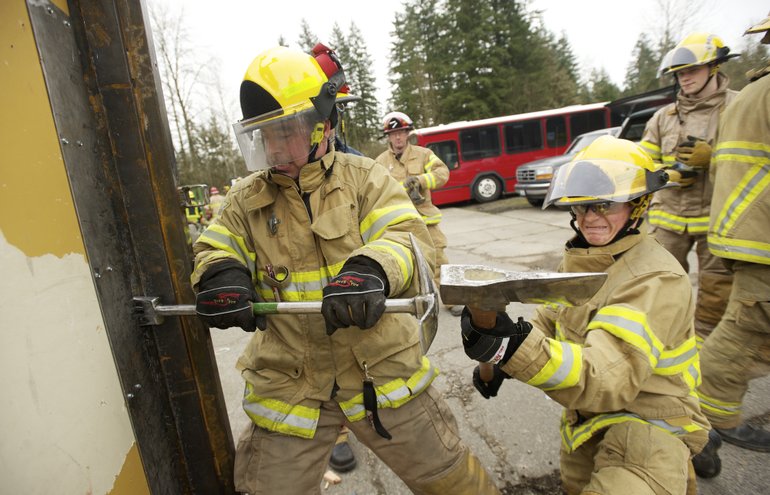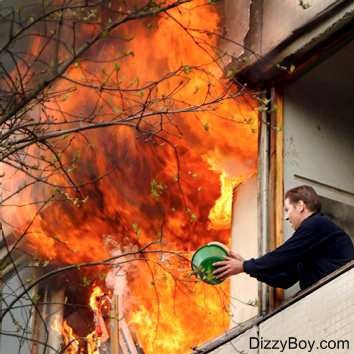
Bnechis
Members-
Content count
4,321 -
Joined
-
Last visited
Posts posted by Bnechis
-
-
-
The villages need to be set aside from the consolidation proposals. They should work on Fairview and Hartsdale first. That is where the greatest gain could be achieved right now. Integrating the villages would only bog up the process at this point.
I just can't get past this.....they are in the same union and social circles, and automatically and routinely respond to each others jobs, train together, and can't have enough resources without one another. Fairview and Hartsdale depend on one another for so many things. So why would merging the departments and removing the very expensive redundancies be a bad thing? This is probably one of the easiest two districts in Westchester to merge.
Why don't many public employees realize they are responsible to the taxpayers to deliver the best services as cost-efficiently as possible?
No one here suggested including the villages. They said include all areas that are outside the villages (i.e. unincorporated area). The biggest thing that will prevent consolidation is if the tax rates will raise in one district while dropping in another. The taxpayers who will experience the raise (even if the consolidated dept. will save overall $$$ &/or improved service) will vote no.
What has been pointed out is if those contract areas were included, this might even the tax rate enough to make it happen.
Many public employees are very weary of politicians who have already been proven in court to not tell the truth and who are willing to throw the FD under the bus to hide the fact that they have major problem in their own operations.
moggie6 likes this -
paying the villages for fire protection saves the town of greenburgh tax payers lots and lots of money also,how does that equal out?
If the town pays village X $100,000 for fire protection and village X gives $50,000 to the fire department, how does that save the taxpayers lots of money? It saves the village taxpayers money, does not provide the level of protection they are paying for (since they don't give it all to the FD) and cost the town taxpayers who are subsidizing it.
-
and the glaring question that no one is raising is why just Fairview and Hartsdale?? Maybe Barry can do a regionalization study on that and I am sure he can come up with some interesting facts and figures.
Because he knows that Edgemont will not vote for it, he is just hoping that Fairview & Hartsdale will.
-
Why souldnt the villages get money for their general funds? The villages are paying the fire departments budgets and it costs money to cover the unincorporated areas for Greenburgh. I am just not sure what you were getting at.
What he was getting at is the town pays more $$$ in fire protection money to the villages, than the villages give to the fire departments for providing the service.
-
Just saw another article on this that said the head of public works is also against this as the garbage trucks will have trouble with this plan as well.
Apparently the Supervisors idea is to widen the sidewalks, pushing parking towards the street and making the street area narrower.
While the talk has been about making engines smaller, another issue is what happens when you reduce the space for ladder jack spread?
California already severely restricts the weight per axle which is why you do not see tower ladders, large tankers or even larger tanker delivery trucks (for fuel delivery).
So if they do this; 1) they will have a problem with FD vehicles, 2) they will have a problem picking up the garbage, 3) they may have a problem with deliveries to homes & stores.
-
From the Paul Feiner Greenburgh Email list.
It's possible that the talk of consolidation led to the accelerated time table resulting in the promotions last night.
Its also possible that Feiner's claim that Chief LaGudice made an Anti-Semitic statement about him, which the Journal News (which openly supports Feiner) later reported did not happen and that Feiner made up that he read it in a court transcript caused the chief to resign, which forced the board to accelerate the time table resulting in the promotions.
-
I always wonder what the city was like when Kodak and Xerox were at their height, and I wish I could have seen how the Quint/Midi concept in action.
Quint and midi was controversial, but had its good points. The two man midi's were great for ems runs and service calls. Since the midis were Class A pumpers, they used them extensively for water supply at fires. The firefighters felt the midis were a way to reduce manpower. They were a dispatcher's bad dream because of the complex rules for response. Sometimes they could go alone and other times they were treated as just part of the quint and not counted as a separate unit.
Prior to the Quint/Midi RFD ran 4 man Engines & 4 man ladders. The administration claimed that the switch would allow them to run the less expensive midi's on many calls and the quints, while more expensive than standard trucks of the day would run less, thus last longer. The staffing switched to 2 on a Midi and 6 on a quint, so in the double companies their was no change in overall manpower.
Around 1980 they bought 3 Sutphen mid mount towers, but when they arrived they did not have the funds, so they sold 1 to New Rochelle (TL-11).
On paper the system sounds great. Till administration says we use to run 4 on a ladder and now its 6, so lets drop back to 4. So a net loss of 25% (from 8 to 6) in those double companies.
Years later, they were trying to go back to standard truck / engines because the chiefs said it worked better. So any apparatus cost savings were lost. But the city ended up with a smaller FD.
antiquefirelt and x635 like this -
Henrico County, VA (Richmond) does similar.
Not exactly. Henrico works a 56 hour work schedule (average). I find it hard to follow. They work 24 on 24 off for 3 rounds, then they get and additional 24 off. Then 2 rounds with an additional 24 off, Then I think it goes back to the start.
-
Why should a firefighter/EMT/Medic/PO/dispatcher go through life carrying the burden of the question of "if I was only a few minutes faster" for the sake of someone else lessening their pain.
Because our culture demands that it must be someone else's fault. Nobody takes responsibility for anything and we should not expect the parents or guardians to take responsibility for the fire or the lack of warning. It must be someone else's fault.
99subi, Dinosaur, Disaster_Guy and 1 other like this -
Western Europe has a very different approach to fire than North America. 1st they do not use wood to build with, they do not have trees to waste on homes. That's why they came to America in the 1600-1700....for our forests. In France I was surprised to see the telephone poles are concrete. The construction methods also tend to have less void spaces. I was surprise seeing external plumbing on the rear of most homes. So their fires are basically content only and need much less fire flow to handle.
Another difference is the difference in our freedoms. In the US the government (fire dept) can not come into my home and inspect it, so if I am unsafe, that's my right. And where are most of our fires? Private dwellings. But in many countries in Europe they inspect private homes, because the community safety is more important than personnel freedoms. Another difference is having a fire is considered a shame on your family.
Another issue is most major US cities are along a coast (ocean or great lake), many in Europe are along rivers, inland from the coast (Paris, London, Berlin, etc.) so less winds.
Another difference is water supply. The hydrant systems in many European city's could not support the LDH or large pumps of ours. The systems there are designed for faster hook up for content fires. In Paris for example the water mains are 6 inch and run under the sidewalks. The hydrants are carried by the pumps (engines) every 100' their is an access plate. you kick it with your heal it pops open, you drop the hydrant in, 1/4 turn and open the valve. Its pre connected to 150' of 3in supply (approx.) hose. the access plates are staggered so on the other side of the street they are in-between the others. So the rig is never more than about 30 feet from a hydrant box. So another reason for smaller rigs, is they do not need hosebeds.
Are they more maneuverable? Yes
Would they work here? Yes
Would they be more effective on initial responses here? Yes.
Would more conflagrations with total loss of any highly developed areas occur here? Yes.
Would insurance premiums here skyrocket here, due to an inability to meet the needed fire flow? Yes.
Finally, European FD's have other systems for moving large volumes of water during major incidents. they use large trailer or POD pumps and draft out of canals. they use 6" supply lines for this and often use hydraulic pumps. Lots of lessons here for depts. that do not have hydrants.
x635 likes this -
BNechis knows a lot more about the apparatus configured to operate on tight centuries-old streets in Europe....hopefully he can explain better.
Thanks.
Now before you look at Europe, one must consider a number of San Francisco issues 1st. The Hills, the construction (Very high number of wood frame, compared to most major cities). And very windy (being on a peninsula that has one of the windiest bays in the world on one side and the Pacific Ocean on the other. Then look at the history of burning 1/2 the city down after an earthquake, and the next one could happen any day.
Week before the Loma Prieta Earthquake in 1989 the City of SF determined that a fire boat was too expensive to have and they could sell the "Phoenix". SFFD said it was critical, but the administration knew better. When the quake occurred all water mains in the marina district were cut. The fire boat became the only water source and prevented a conflagration. Shortly after that, the city purchased a 2nd boat (used) from Vancouver Canada.
So even if this sounds like a good idea. It can change to a very bad one in 30 seconds. SF is a city that needs big pump capacity and powerful rigs to get up and over those hills.
I got to ride with SFFD Rescue 2 & Ride on the Phoenix in the early 1990's. It was like being on a roller coaster in the back going up and over those hills.
Part II - Europe (tomorrow).
Bottom of Da Hill, JFLYNN and x635 like this -
This is an answer to the request from a commanding officer for a tanker & manpower or an engine & manpower. Quaker Street wanted to make this unit truly a multipurpose unit and fill the requests of other departments while utilizing only one unit. They also needed a second piece of apparatus for a back-up.
If it meets the needs of the department, great. But you should never buy apparatus to fill the needs of other departments. You get what you need and you make it work as best you can for them.
Years ago I worked on an engine replacement project for a dept. in another county. The chief wanted a 3,000 gpm engine (replacing a 1,000 gpm unit). The commissioners were concerned that it was not needed. I was interviewing the chief and asked what the best hydrant in the district was (1,200 gpm), did they have a multi looped hydrant system and if they had any drafting locations (no). I asked how was he going to get 3,000 gpm to put into the pump in his town? He said they wanted it because if they had the biggest pump in the county, everyone would call them mutual aid and his ff's would get more experience. I asked if he understood he was asking to spend enough for 2 standard engines and then was going to strip the community of it and personnel on a regular basis? He said he never thought of it that way and dropped the idea.
x635, Morningjoe, BFD1054 and 2 others like this -
Let me elaborate some more....the department gets the $1 rescue, as a "gateway" into getting the brand new rescue they really want.
I've seen numerous departments manage to get apparatus they don't really need replaced in this manner. Most Village officials don't have a clue about how FD's operate, so they can be easily swindled by Chiefs. Most Fire Districts are clandestine, and can get away with anything and this is how some Districts facilitate purchases.
So like I said before, Its up to the municipality. If they do not understand how a large portion of their public safety is set up, operates and costs, then shame on them.
velcroMedic1987 likes this -
1) That's up to the village/town to determine, just like any other purchase.
2) Your 1st due engine ( in a dept. with only 2 engines) blows a motor. You only run 50 calls a year and only 1 working fire every other year. Have you set a precedent that it needs to be repaired/replaced? (answer in #1 above).
SmokeyJoe, velcroMedic1987 and sueg like this -
It doesn't specify whether Phoenix is going to upgrade their Knox Box system to the one "both people" have to turn the key.
The dual lock system is designed so 2 different depts. can have their own key to a box they might go to. But only one needs to be used to open it.
-
And that is why so many businesses resist putting Knox boxes outside their facilities and offices.
We have found that after the 1st automatic alarm to the FD, they are very willing to put them in. Must be because its cheaper than using the other FD keys.
sueg, SageVigiles, antiquefirelt and 2 others like this -
NYS DMV (not DOT) laws generally recognize emergency vehicles (those allowed to have red lights/siren) as official (read: municipal) vehicles (most fire & PD) and ambulance services. Their is no recognition of public utilities (that are not governmentally owned) as emergency vehicles.
Realistically the type of vehicles they are responding in, will only get to us a few minutes faster with RLS. And the real issue is each crew is covering a very large area. Since the public is not willing to pay higher utility rates, this will likely remain unchanged.
-
The 2nd picture is 211 South 4th street. When the current station 3 was built, this was turned into the Ambulance building & traffic Division. Was a total dump. Rumor was it was unsafe for firefighters, so they stuck EMS there.
We had to barricade the 3rd floor door, as it was a shooting gallery. The junkies would sneak in from the apt building behind it. I worked 5 or 6 overdoses up there. It stopped when the Feds seized the apt building.
A fire finally forced EMS into a trailer outside station #3
-
The new Engine 23 drove by me in traffic today on I-95 in Fairfield, CT. It looks great!
I have some spy shots, but I hesitate to produce them if it's still a secret
 .
.How can it be a secret if it drove past everyone from Nebraska to Conn.?
newsbuff, velcroMedic1987, 16fire5 and 1 other like this -
And I will back this up with a reported fire in a highrise, 4 police cars on scene prior to our arrival, 1 sitting on the hydrant we needed to make, 1 parked ifo Siamese connection. Good smoke from a pot on stove, no big deal. here is my point, 4 POLICE VEHICLES ARE NOW TIED UP AT A FIRE SCENE, THEY CANT GET OUT OF DUE TO THE WAY THEY PARKED, ALL BLOCKED IN. So the next call COULD have been a stabbing, domestic dispute / ems call.
And they had trouble moving them because they were being treated &/or transported for smoke inhalation, so they took the EMS resources for the public and us away.
-
Any Spy Shot Yet
LOL. ask again in October.
They generally don't start to bend metal till 90-120 before delivery. The upfront time is the waiting line and the time for the manufacturers to acquire all the components.
Bottom of Da Hill likes this -
FirNaTine likes this -
The FD teaches many things to the Public Bnechis but as we All know it often falls on deaf ears. The examples are plentiful!
You are correct, but if you take the hose out, the lesson is clear, get out, because you have no means to stay and fight.





in Westchester County Area Emergency Services News
Posted
What amazes me is Feiner keeps getting re-elected. His actions constantly result in litigation against the town.